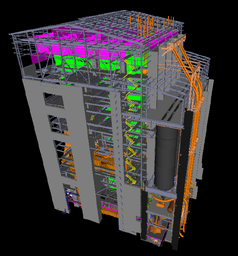Level Of Detail Based Occlusion Culling for Dynamic Scenes
[abstract]
We present a non-conservative occlusion culling technique for dynamic scenes with animated or user manipulated objects. We use a multi-pass algorithm, which decides the visibility based on low level of detail representations of the geometric models. Our approach makes efficient use of hardware support for occlusion queries and avoids stalling the graphics pipeline.
We have tested our approach for large real-world models from different areas. Our results show that the algorithm performs well for medium complex scenes with 5 to 20 million triangles. with a very low number of hardly noticeable pixel errors, typically in the range of 0.02 percent of the total number of visible pixels.
Keywords:
- I.3.3 [Picture/Image Generation]: Viewing Algorithms, Occlusion Culling
- I.3.5 [Computational Geometry and Object Modelling]:Object Hierarchies
- I.3.7 [Three-Dimensional Graphics and Realism]: Hidden Line/Surface Remova
Additional Keywords:
- Visibility and occlusion culling, large-scale data visualization.

Our approach works well for interactive scenes with dynamic objects and performs better than classical stop-and-wait approaches. Most of the occlusion culling algorithms make use of complex pre-computed data structures to keep information about the occlusion relationships in the scene and can be used only for static scenes. With the use of LODs the occlusion is computed online and no additional data structure is needed. In the first picture (1) the roof occludes the interior. After moving the roof and changing the occlusion relationships, the scene is still correct and the interior can be seen(2). Our algorithm generates a significant speedup compared to standard LOD-based rendering without introducing significant quality tradeoffs. For applications which are already using different level-of-detail representations such as CAD rendering systems or computer games, major changes in the implementation are not required.
Documents and Publications
- Grundhöfer A., Brombach B., Scheibe R. and Fröhlich B. 2005.
Level Of Detail Based Occlusion Culling for Dynamic Scenes.
In proceedings of Graphite 2005 - 3rd International Conference on Computer Graphics and Interactive Techniques in Australasia and Southeast Asia (Nov 29 - Dec 2 2005, Dunedin, New Zealand). - Video (in progress)
- Presentation (in German)
Contact
Email at Anselm Grundhöfer, Benjamin Brombach, Robert Scheibe or Bernd Fröhlich

